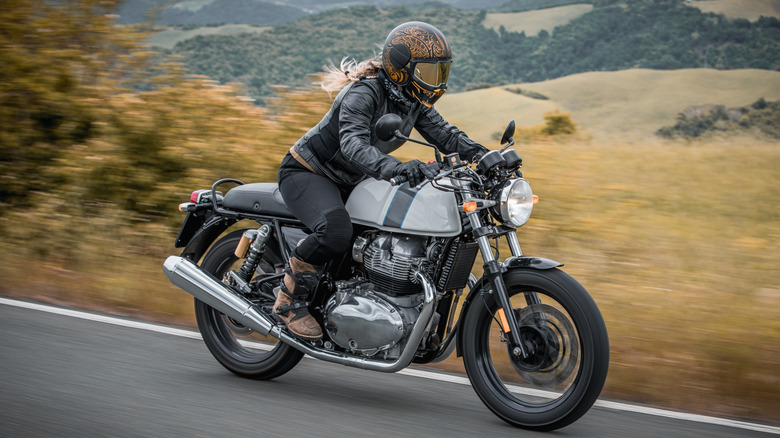Is Classic Motorcycle Insurance Cheaper Than Policies For New Bikes?
Not unlike their four-wheeled counterparts, motorcycles are subject to all kinds of paperwork before they can legally hit the road. One of the most important things to square away is insurance, both for your physical and financial wellbeing, as well as those of other motorists. To no surprise, insuring a motorcycle isn't a practice limited to modern models. Even the most reliable vintage motorcycles ever built need to be insured, though it's not quite the same as insuring a newer ride. In fact, there are some cost differences between these two policy types to keep in mind.
In most cases, if you're looking to insure a classic, vintage, or antique motorcycle, you'll be dealing with lower premium costs than those of a modern bike. The fact is, as awesome as newer bikes can be, when it comes to replacing parts — or the entire bike — in the event of an accident, it's going to cost the insurance company more on average to do so. However, in some instances, you could have to endure higher premiums on an old motorcycle. If the particular model has increased in value dramatically throughout the years, or has been customized to a major extent, higher premiums could follow.
With all of this in mind, it should be clarified what exactly constitutes a classic motorcycle. Here's what insurance companies generally look for when it comes to such bikes, and what you need to do for your ride to keep it insured.
What qualifies as a classic motorcycle to insurance companies?
Seeing as classic motorcycle insurance is intended only for specific motorcycle models, a lot goes into identifying such a ride on the insurance companies' end. Naturally, the most crucial piece of information is the age of the motorcycle in question. Typically, a motorcycle is considered classic, vintage, or antique once it hits the 20-year mark. There is some fluctuation to this, though, with some insurance companies deeming vintage bikes to be those over 25 years old, while antique are classified as those over 35 years old. Moving on, there are a few other criteria your bike may have to meet depending on the insurer you go with.
Aside from the age, the condition of the motorcycle seeking to be insured is important, too. First and foremost, your bike should be drivable and appear in relatively new shape, as if it were only a few years old. If it falls short of these requirements, insurers may decline coverage altogether. At the same time, your use habits should be limited to occasional riding, such as for motorcycle shows or one-off rides. Storage requirements may also have to be met, meaning the bike should be regularly parked in an enclosed building, like an appropriately motorcycle-sized storage unit, to prevent damage or theft. Some insurers may ask for a list of all possible riders, too, to at least help give you an accurate quote.
Of course, there's more to classic motorcycle insurance than qualifying and getting a rate locked in. For those applying, what does this type of insurance actually offer?
What classic motorcycle insurance typically covers
Like with a new bike, a car, or a home, insurance rates aren't uniform across the board for classic motorcycles. Depending on where you decide to sign with, whether that be one of the best or the worst of the major motorcycle insurance brands, what you get for your monthly premium cost can vary. For instance, looking to Progressive, there are some great benefits. The company offers comprehensive coverage, collision, coverage for part replacement from the original equipment manufacturer, and between $3,000 and $30,000 in accessory coverage should you need it. In this specific case, you will need to meet the necessary criteria, including having comprehensive and collision on your policy.
Meanwhile, State Farm coverage comes with a lot of similar benefits, including limited accessory coverage. As for Nationwide, it offers similar coverage, with comprehensive, liability, and the like being available, along with the benefit of no mileage limits. You are free to ride your bike as much as you see fit without worry of breaking your contract. The best way to ensure the classic motorcycle insurance you're looking into is the right one for you is to simply shop around. Contact agents from different companies, compare quotes, and determine which brand is right for you, both in terms of coverage and your budget.
No one likes dealing with insurance, but it's a necessity of modern driving. It's even a must for classic motorcycles, though, fortunately, it tends to be cheaper without compromising on the coverage you need.


